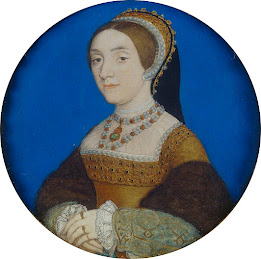24th December - Fasting

Before the Reformation in the 1500's Christmas Eve would have been a day of feasting, as it was the last day of 4 weeks of fasting and the end of Advent. This would have been ended by a meal of fish sometime after noon. Due to Advent, houses weren't allowed to be decorated until Christmas Eve and even then most people were still working. Everyone would go out into the countryside and woodlands to gather as much holly and ivy as they could. It would then be taken back and hung all around the house and the local church. These plants were seen to bring good luck, but bringing them in the house before the 24th was seen as bad luck. Royal palaces were also decorated in evergreens, they would have also been infused with scents of Christmas, like cinnamon, ginger and cloves. Oranges were also used as a decoration, they were also given as gifts. Most of the evergreen used were used in such a way that would prevent people from working as no work was to be done over the 12 days.

There were no Christmas tree during the Tudor period, the first was recored in the 15th century, but there are no others on record. It was believed the Martin Luther invented the tree in 1536, while he was walking though a pine forrest. This made him set up a tree lit by candles in his house, but this was in Germany, trees in England didn't become popular until Prince Albert brought the tradition over from Germany during the reign on Queen Victoria.
Another tradition that was followed in the Tudor period was The Yule Log, men would go out on Chistmas Eve to fell a tree then drag it home to the fire place. It was then decorated with ribbons, greenery and a splash of alcohol. The log was then lit with a piece left over from the year before, it was then to be kept buring throughout the twelve days of Christmas. If it went out it was believed to be bad luck for the new year that was coming.
Churches all over England would set up Christmas Cribs or Nativity scenes. This is were the tradition of Midnight Mass on Christmas Eve began. This was a big symbol for the Catholic faith, as it showed that Christ had arrived. For the Tudors the 12 days of Christmas started when Christ was born and then ended when the Three Wise Men arrived to see him. For the Church this would have been a very strict Religious holiday and celebration.

The spirit of Chistmas during the Tudor Period was often a bit all over the place. Even though there was good cheer, people were suspicious of the supenatural which caused their thoughts to roam. By the Elizabethan period, there was the tradition of telling ghost stories round the fire side on Christmas Eve to help pass away the winter evenings. It was belived that the veil to the other side was at it's thinnest meaning spirits could walk the Earth. It was also belived that between Christmas Eve and Twelfth Night the power of Christ being born outranked the spirits meaning that they brought good luck. It was also said that at midnight the cattle and oxen would kneel in the dark to worship Christ. Bees would also come out there hives to welcome him.

A Tudor Christmas was a religious festival, people would attend church and make offerings on certain feast days. At midnight the Church bells would ring out to invite people to Midnight Mass and the church would have been a sanctuary, lit with candles and decorated in evergreens. Voices would be heard singing "Adeste Fideles" as they welcomed Chritsmas. Midnight also saw the last meal of Advent, this then welcomed the First Mass of Chirstmas Day and that celebrations would then begin.
The Tudors, as devout christians (Protestant or Catholic), saw Christmas as a religious time of year.







Comments
Post a Comment